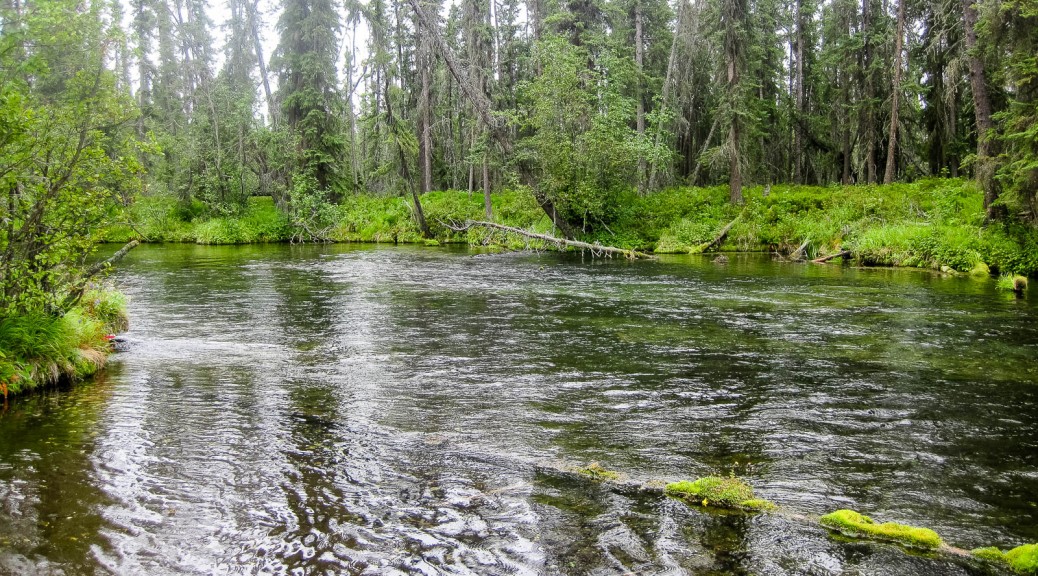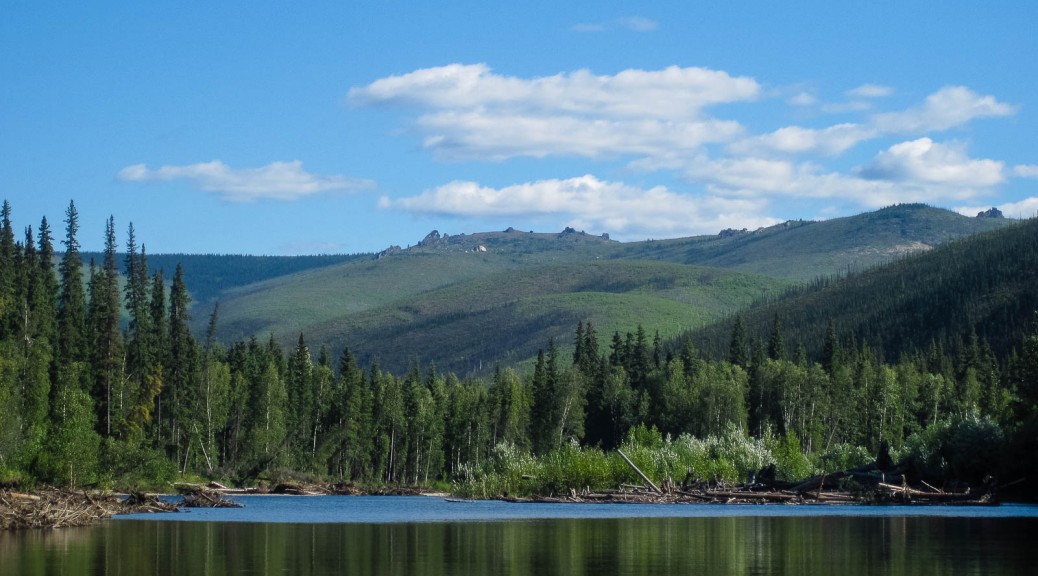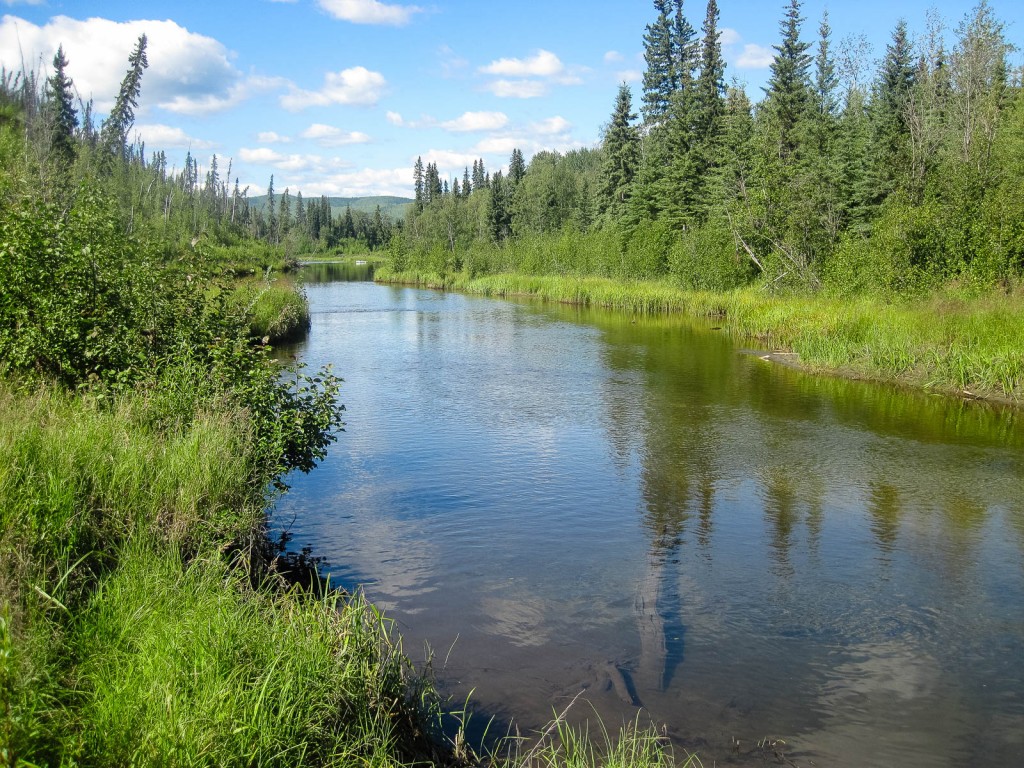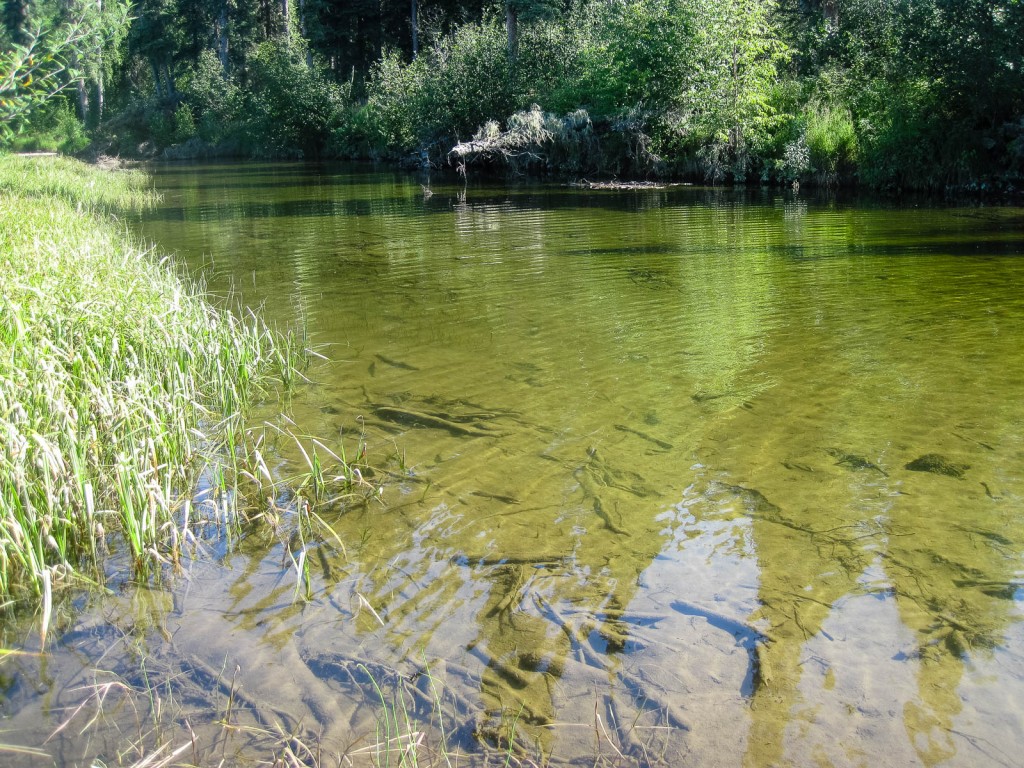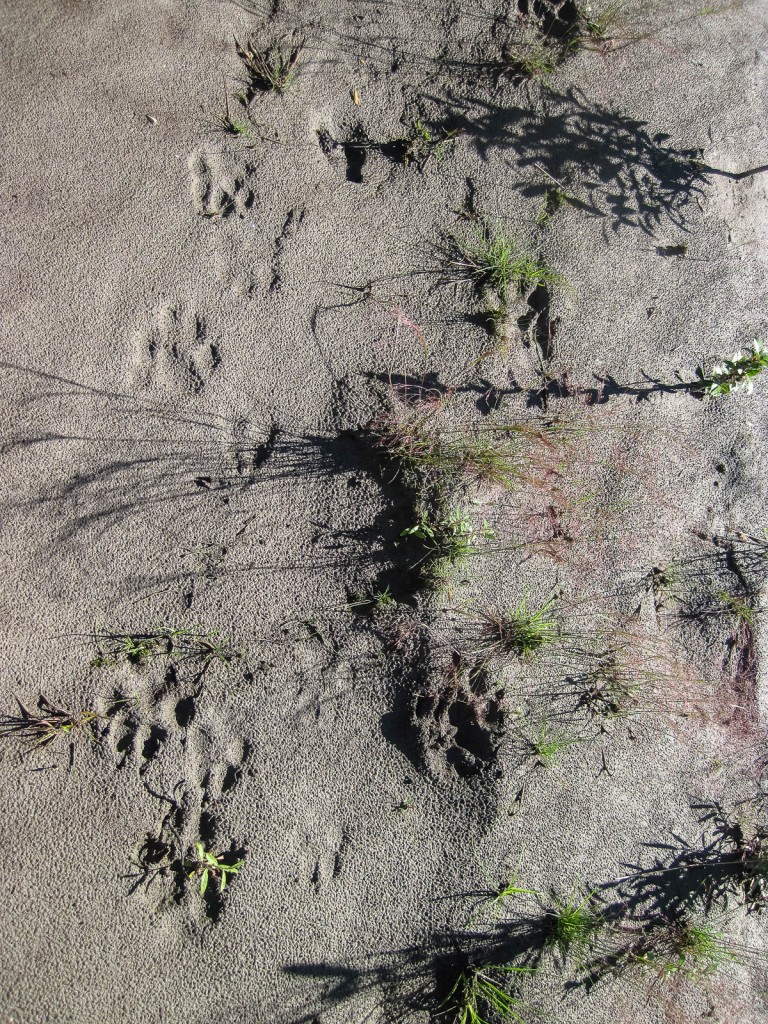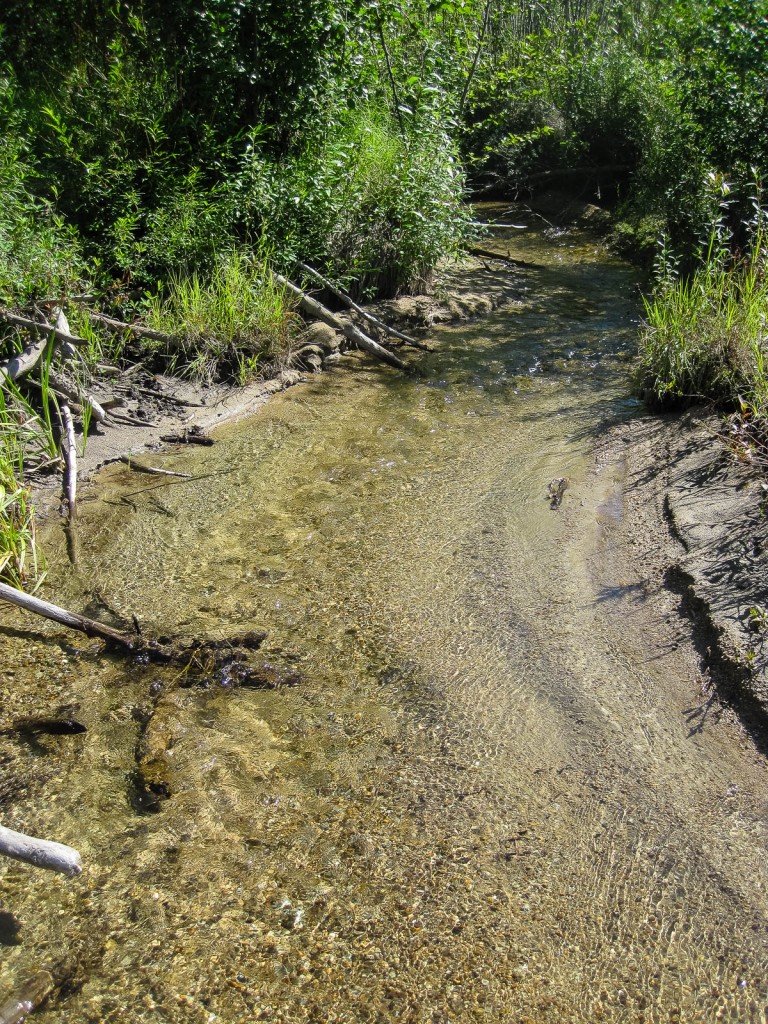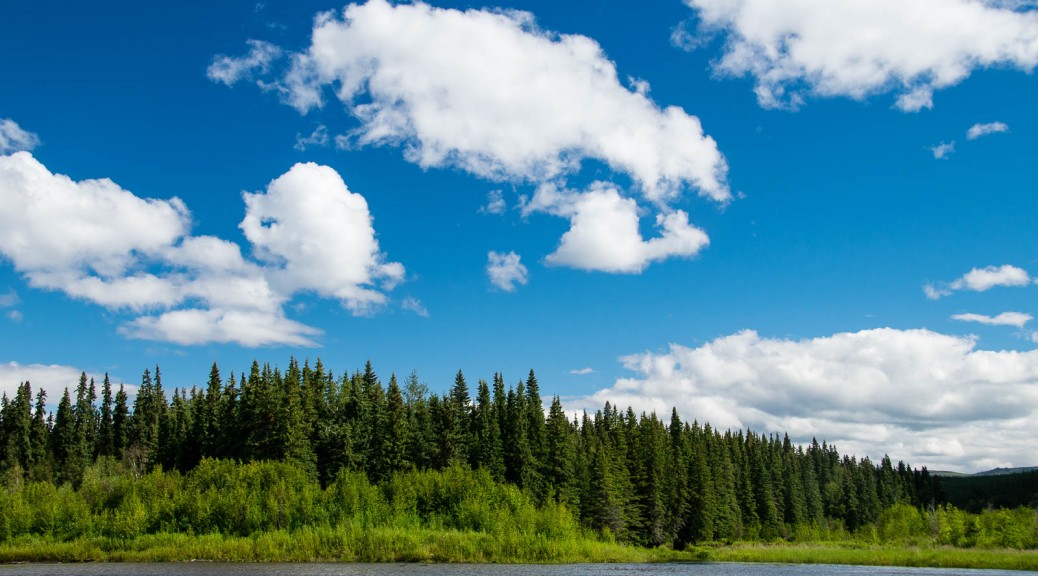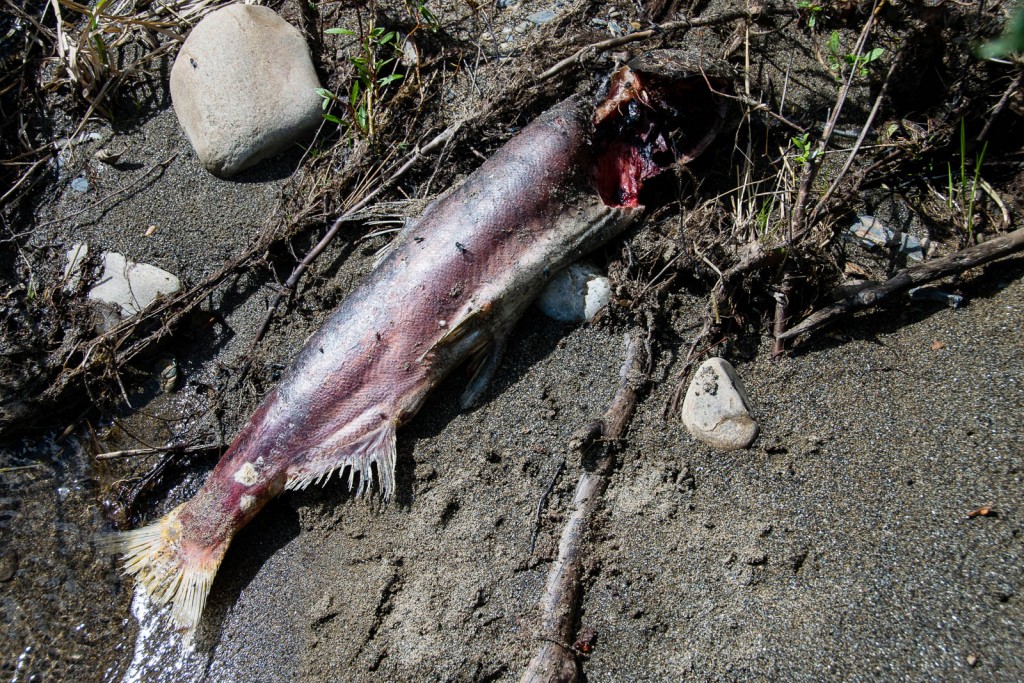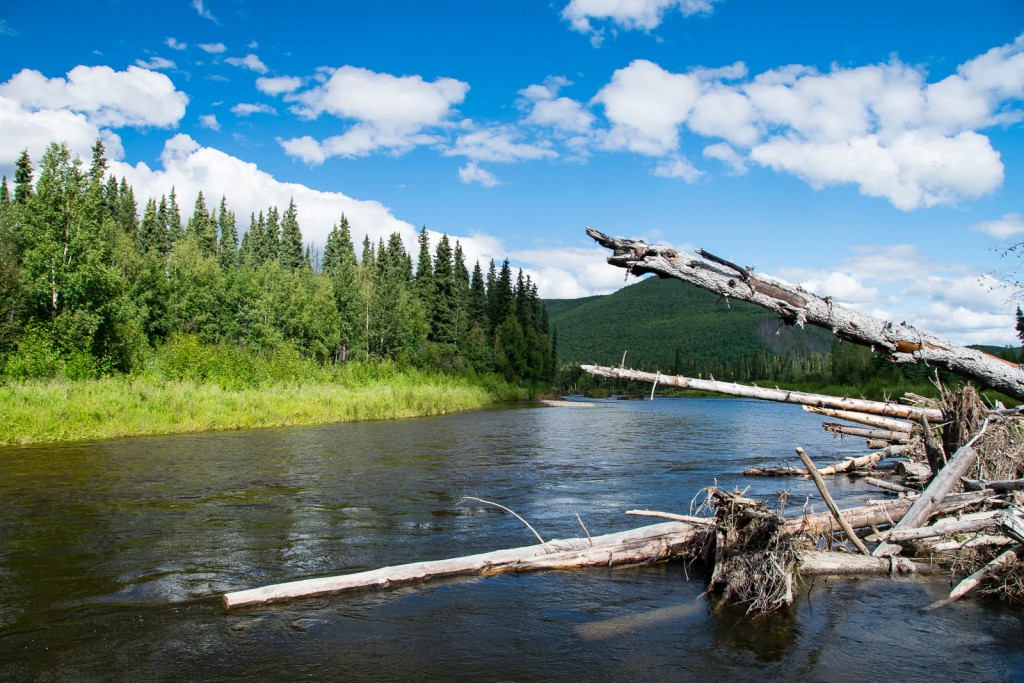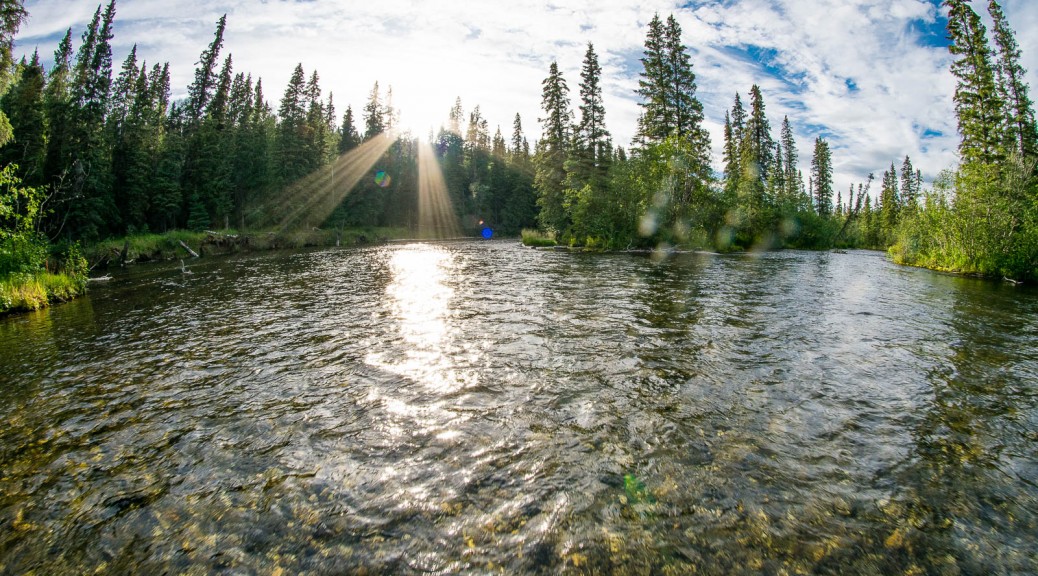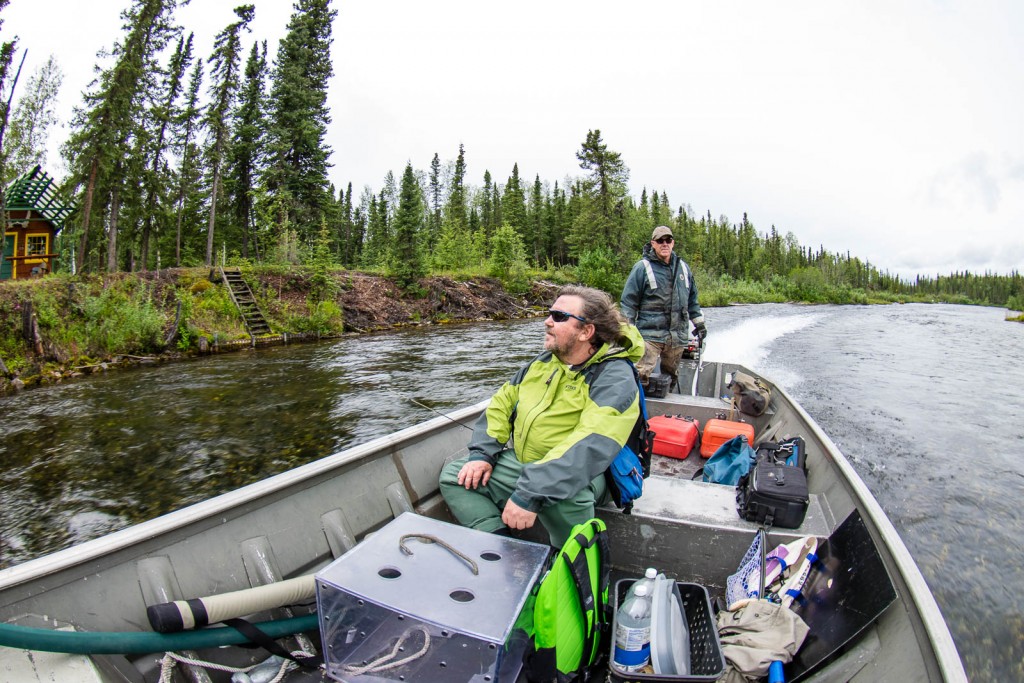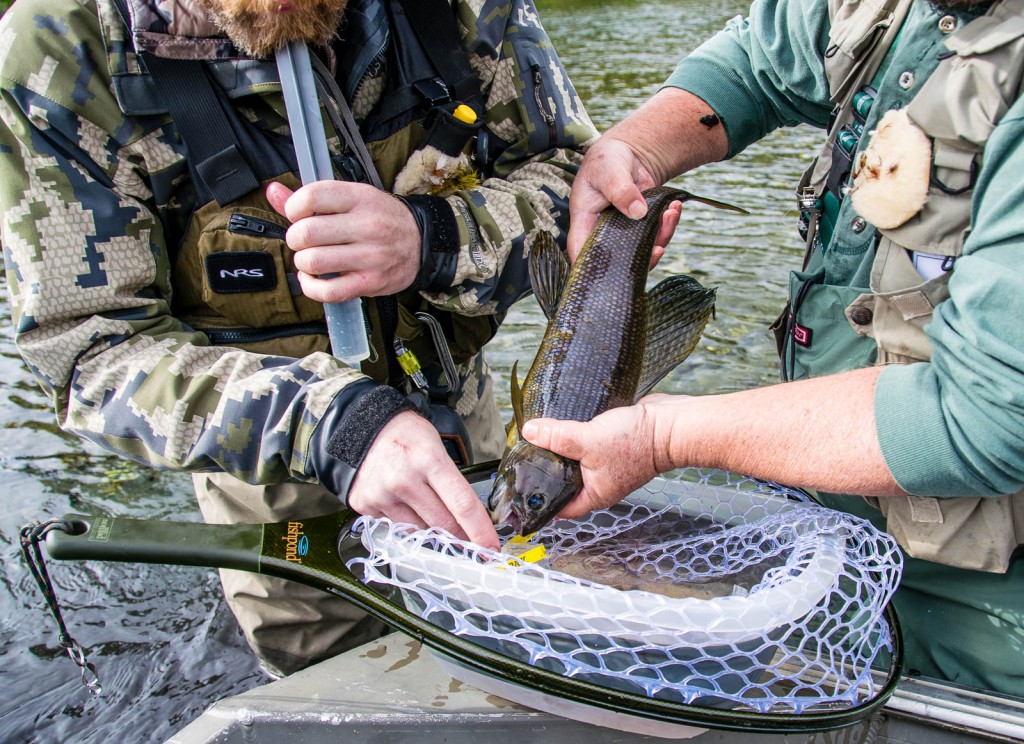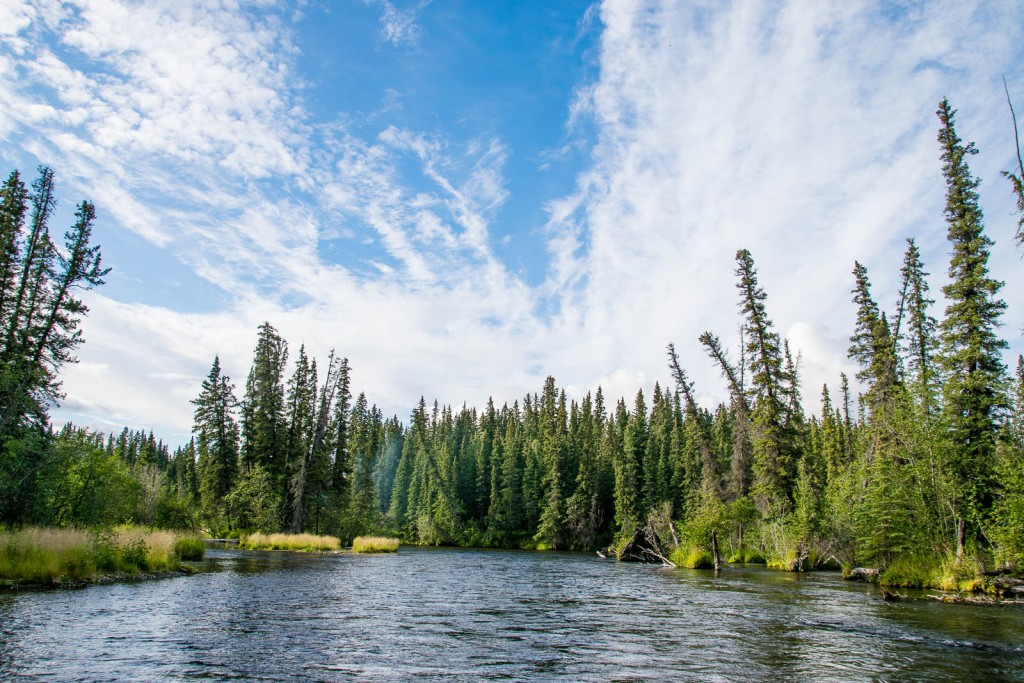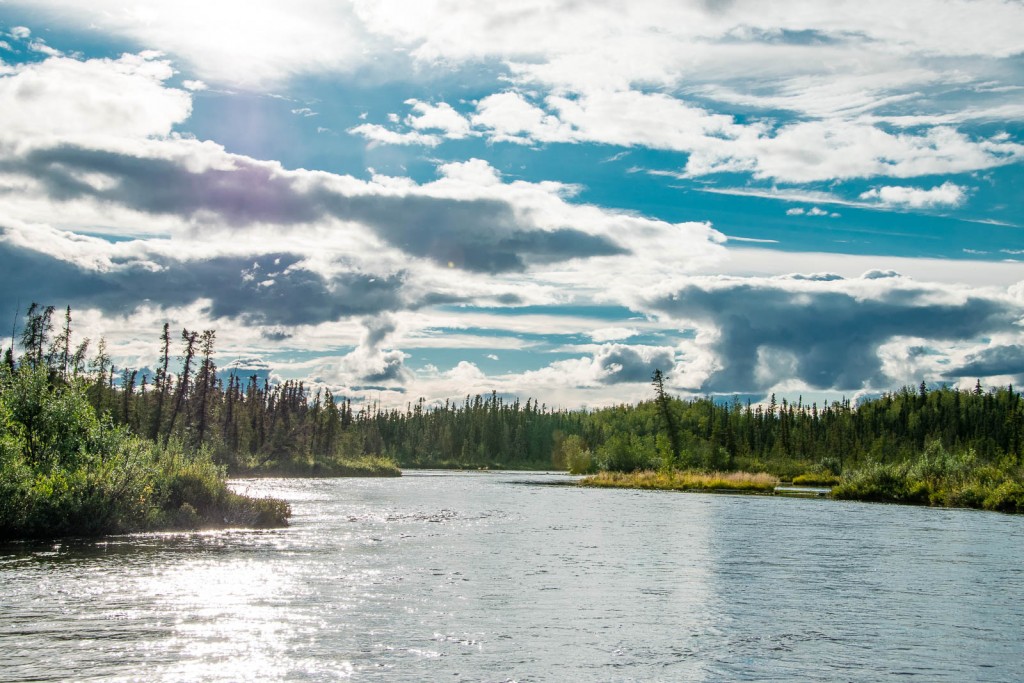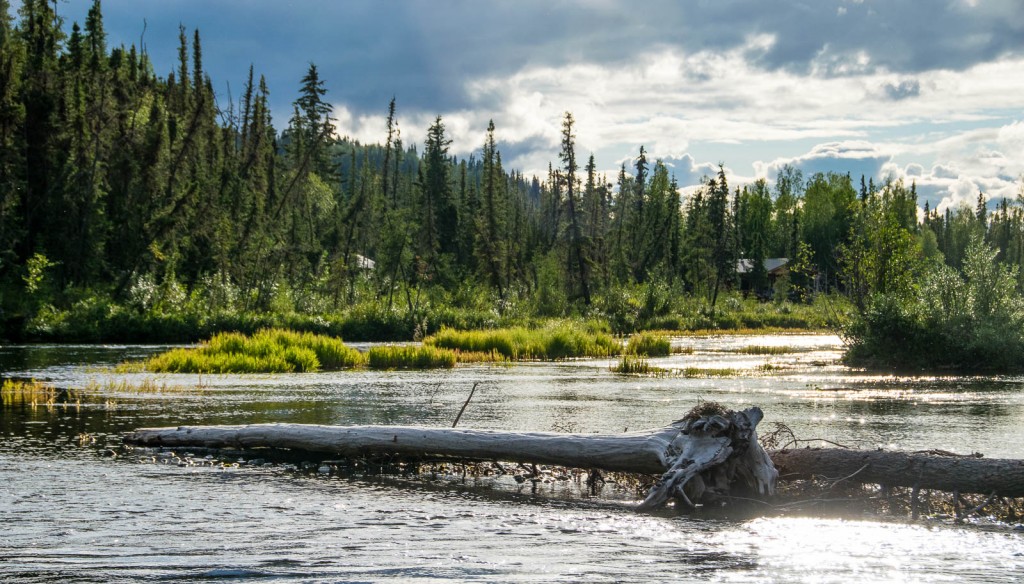The Richardson Clearwater, our grayling study stream, is difficult to access. Its much better-known big brother, the Delta Clearwater, holds as many or more big grayling and there’s a boat launch right on the river. My main reason for choosing the smaller, more remote stream is that I thought the Delta might be a little bit too big, too swift, and too deep for us to place our cameras near the fish to record their feeding behavior.
However, I hadn’t actually seen the whole river myself. So I was pleased when the ADF&G biologist in Delta Junction invited me to visit the Delta Clearwater with her on August 1, 2014, and see if it might be a better fit for our study.
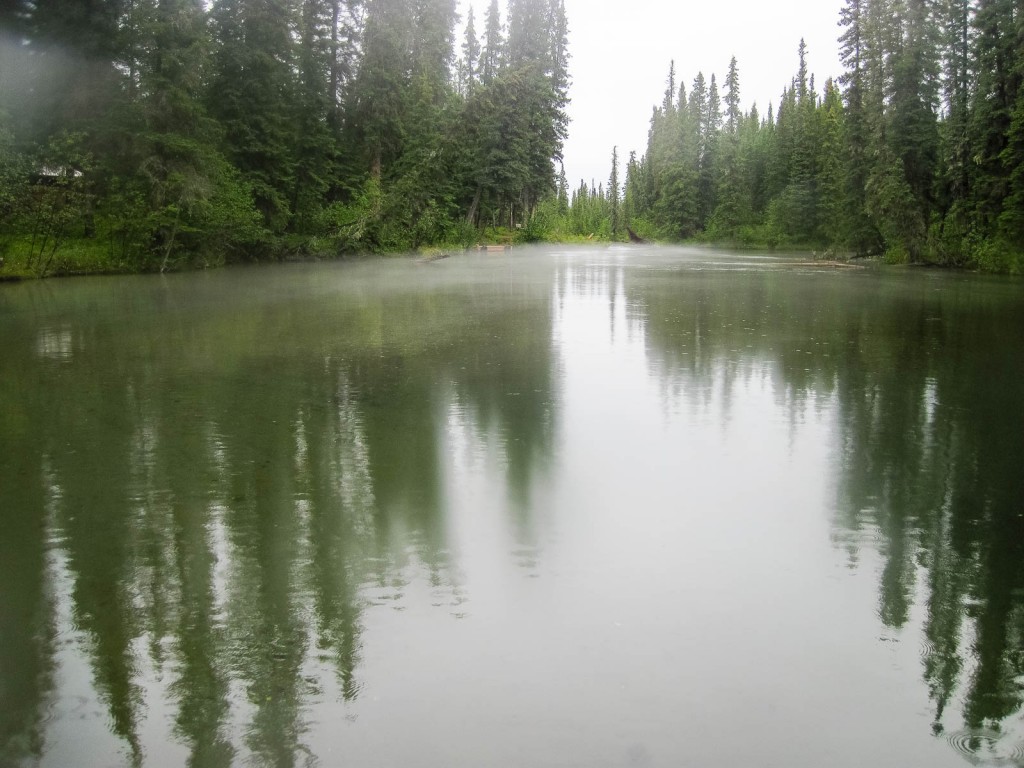
We navigated the river as far upstream as we could, up two different forks.
Ultimately, I realized that my initial reasons for choosing the other river were correct. The Delta Clearwater was very much like our study stream, except that it was very difficult to find any place to set cameras on grayling without the cameras (or me) getting swept away in the icy current. But it was very good to gain this confidence that we left no stone unturned in choosing the ideal sites for our study.

